AID Simulation
Diabetes Type 1 Closed-Loop Simulator
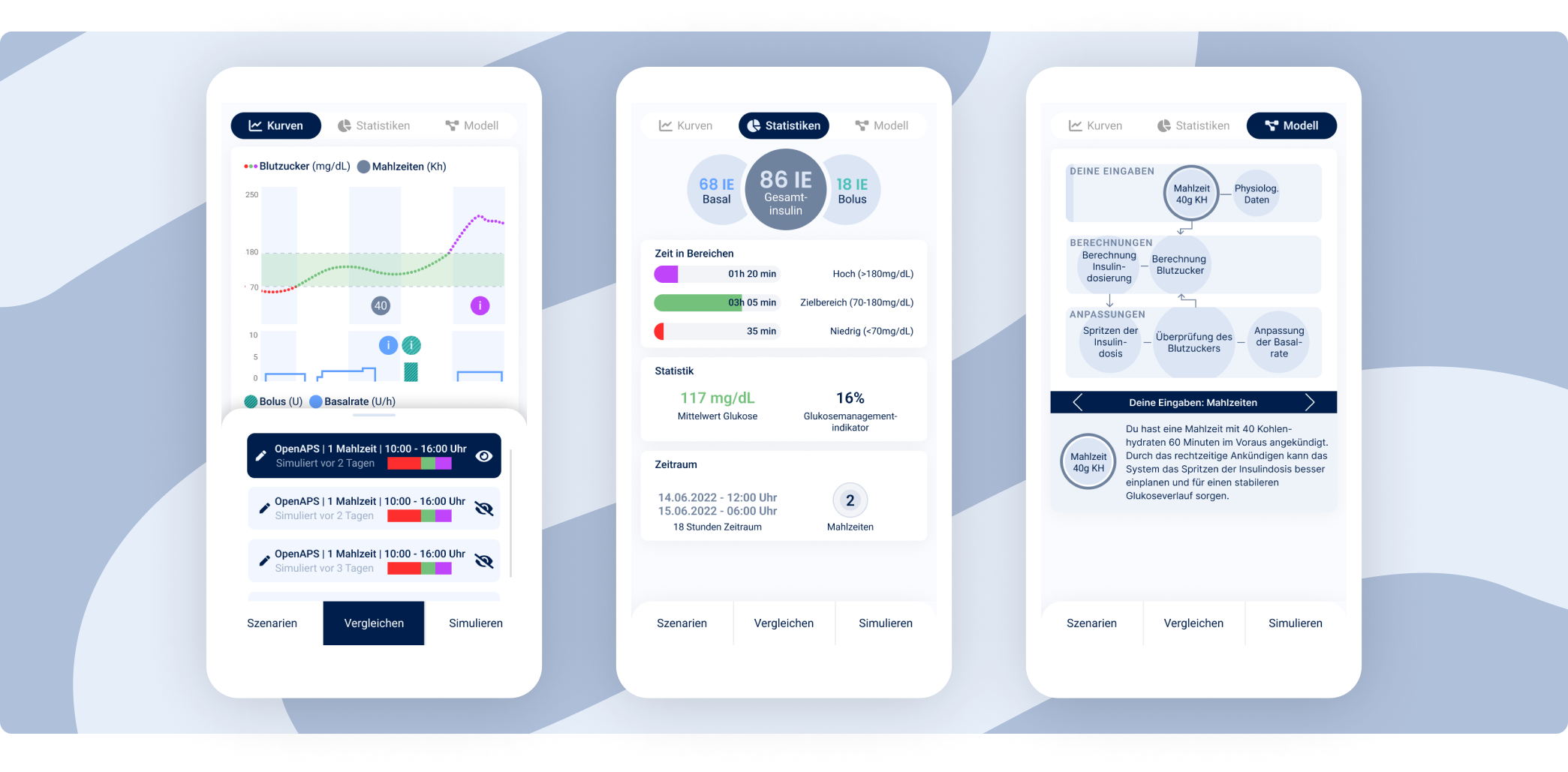
Closed-loop systems can already positively influence the treatment of diabetes. Nevertheless, these systems have a health-critical influence on the users, which is why trust and comprehensive knowledge about them are essential. In this project, a closed-loop simulator was redesigned so that patients have exactly these insights into the algorithms.
Role
UX & Visual Designer, Researcher
Timespan
May - July 2022
Context
Media informatics project
Keywords
Design Research, Interviews, Prototyping, Frontend Development
Motivation
Studies show that closed-loop (CL) systems can successfully support diabetes type 1 management and achieve better clinical outcomes than comparable treatment options. Such systems include many components, such as continuous glucose monitoring, insulin pump and a device that performs calculations such as insulin dosing.
"It’s hard to give up control. I think about my diabetes constantly. I make a million decisions a day. So it’s hard to let that go."
Participant in the study by Tanenbaum et al. (2020)
While the successful use of such a system means a great benefit to the quality of life of those affected, incorrect insulin dosing can have life-threatening consequences. Accordingly, it is important that users of such a system have complete confidence in the automated form of therapy. The goal of this project is to establish such trust through traceability of system behavior.
24%
diabetics used diabetes management apps in 2017 (Trawley et al., 2017)
70%
of users of closed-loop systems trusted them in a physician-controlled setting, according to a metastudy by Farrington (2018).
Research
To be able to dive deeper into the context, we have worked intensively with the LoopInsight1 (LT1) simulator. LT1 is an open source project from the University of Applied Sciences Ulm, which simulates the interaction between a person with type 1 diabetes and an AID system. The simulator of LT1 forms the algorithmic basis for this project. Therefore, we took the functional basis of this simulator and adapted the user interface to our findings, e.g. to strengthen the promotion of trust in the system.
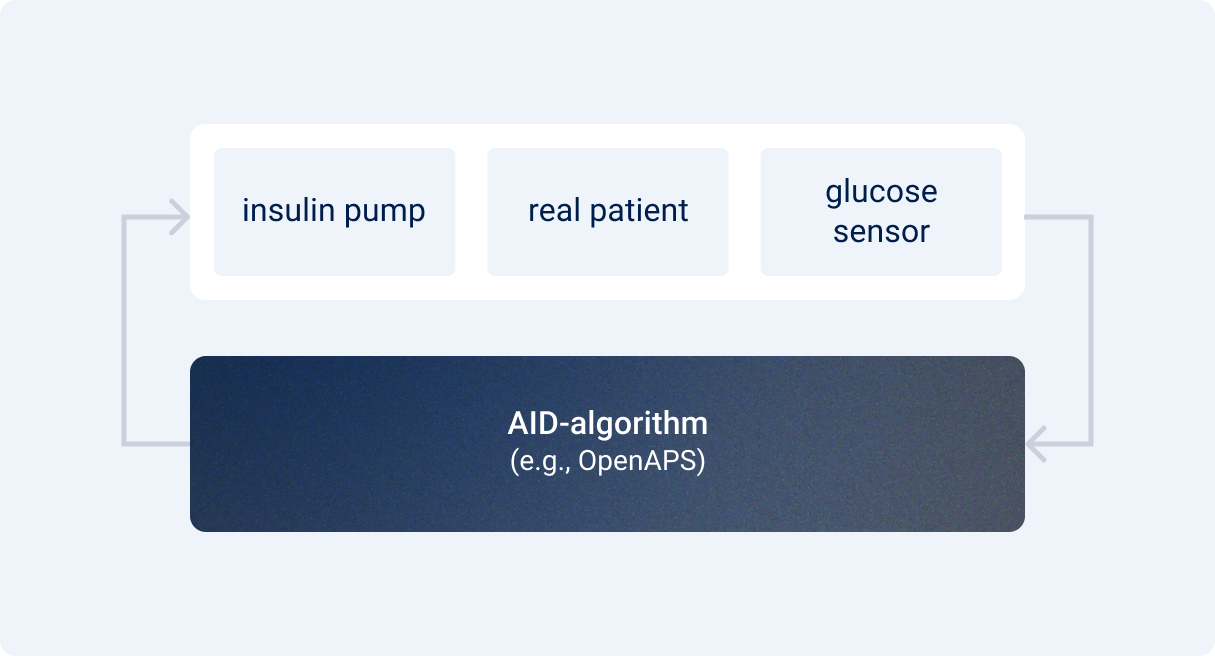
Challenges
We identified the following challenges in the development and design of AID systems:
Challenge #1
Mental workload
In diabetes management, there are a variety of (numerical) factors to consider that demand cognitive resources from users.
Challenge #2
Skill degredation
If tasks are completely automated without involving users, they may lose the skills to perform them by themselves. This also leads to them being more insensitive to possible error conditions of the automation.
Challenge #3
Trust
The administration of insulin can cause health-critical conditions. Therefore, it is even more important that users can trust the capabilities of the system.
Challenge #4
Situation awareness
Users can understand the system's states and even anticipate them. This in turn has an impact on trust and can influence the extent to which the skills are degredated.
Interviews
To learn more about the context, we conducted interviews with three people with type 1 diabetes. The goals of the interviews were to find out what data are necessary for diabetes management and what problems or challenges are encountered in this process. These interviews were also a content entry point to learn more about the context of use.
"At the moment, I have to trust the system blindly and hope that it makes the right decision. Of course, it's also very difficult in the first few weeks to completely relinquish this control."
Interviewee who currently uses a closed-loop system
As a first step in building trust in closed-loop systems, interviewees expressed a desire to be able to test the functionalities without effects on their own bodies.
Existing systems are far too non-transparent and do not offer any explanations, according to the interviewees.
In addition, the desire was expressed to be able to use the simulation spontaneously and on the go, in order to be able to play through spontaneous activities for safety's sake.
Excursus: The first-failure effect
According to the first-failure effect, the operator's trust in an automated system decreases as soon as a system error occurs for the first time. After that, trust is restored only slowly. An exposure to the possible failures may allow for better calibration to the actual reliability (Parasuraman & Manzey, 2010).
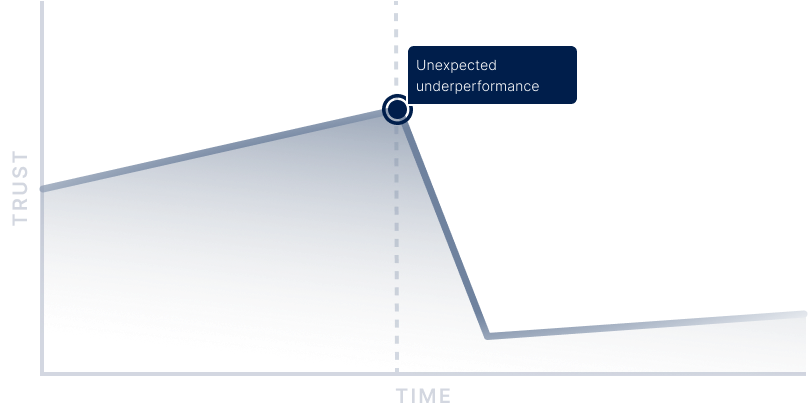
Requirements
We were able to derive some requirements for the design of the simulator from the interviews:
- Reduction and simplification of parameters to set the simulator
- Provide insights into the calculation process
- Communicate capabilities and limitations of the system
- In a wide variety of everyday situations, the question could arise as to how the system would react. Therefore, the simulator should be accessible on the go with mobile devices.
- Offer scenario presets that represent a specific situation that affect blood glucose
In particular, these requirements are intended to promote the level of trust in the system through familiarization with its functionalities and limitations.
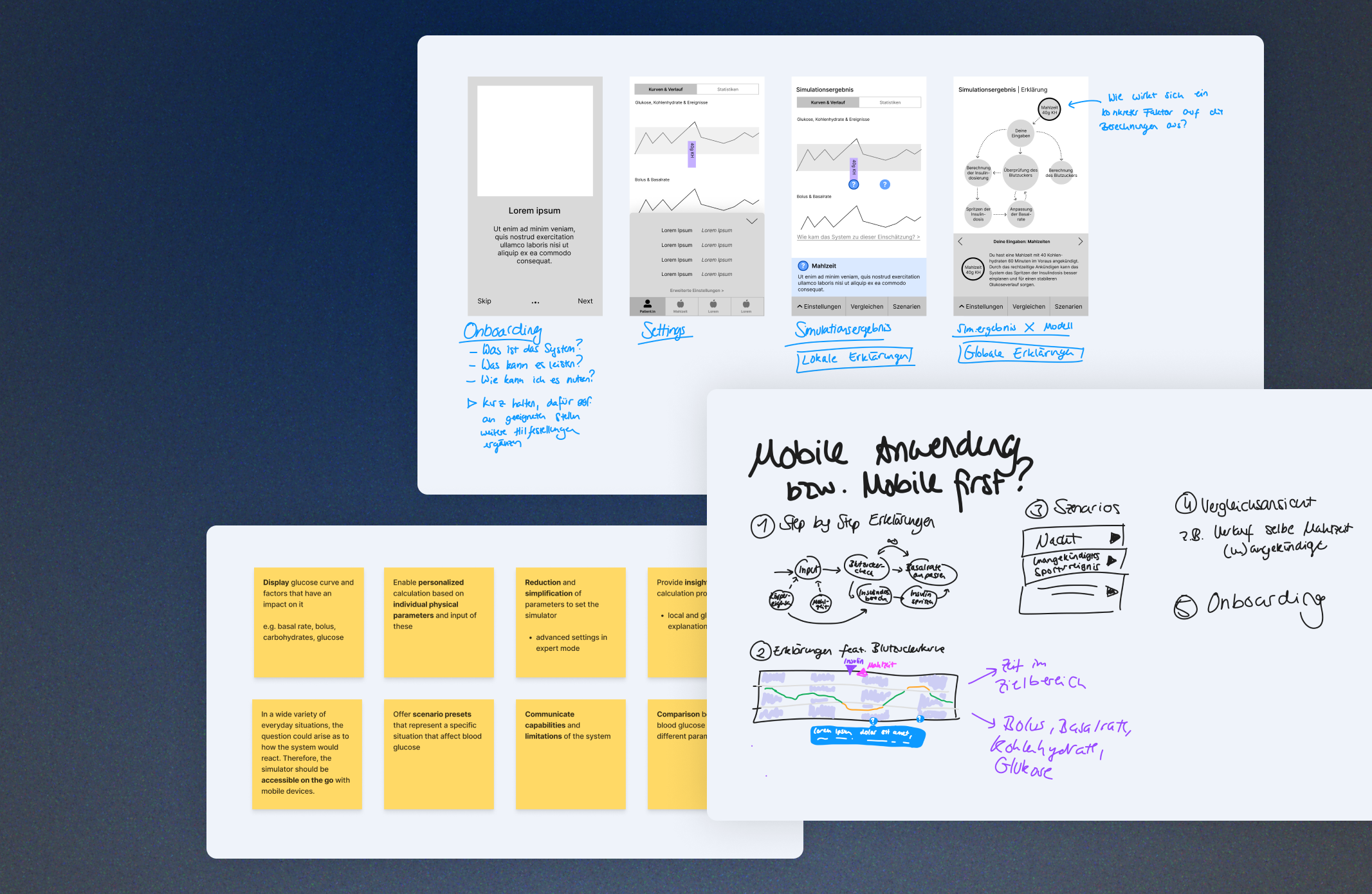
Design
The result of this project is a mobile AID simulation app based on the LoopInsight1 algorithm.
As a basic requirement for the design, we focused on usability for a broad target group. Therefore, we have reduced the adjustable parameters to the most necessary and extended them by an expert mode with further setting options.
The use of Google's Material Design 3 guideline is intended to help users recognize familiar interactions and reduce the required learning of functionality.
The simulator communicates not only possibilities but also functional limitations to create realistic expectations
Users can explore the flow of their data through interacting with the process visualization
Typical everyday scenarios extracted from interviews are available as presets that can be selected quickly
Dealing with the first-failure effect
In order to deal with the first-failure effect, we allow the users to actively observe challenging scenarios (e.g. through several preset scenarios). This includes not only communicating the scenarios that can be covered by the system, but also functional limitations to avoid overreliance.
Ability through traceability
In order to gain an understanding of the system behavior, users should play around with the system themselves as interactively as possible. For this purpose, we have introduced two different types of explanations:
- Local explanations — Users can check out extreme points on the curve and get insights on the expression of the data at that point
- Global explanations — An interactive visualization of the data flow conveys the influence of the inputs on the calculation process. Users can thus track step by step which changes certain inputs result in.


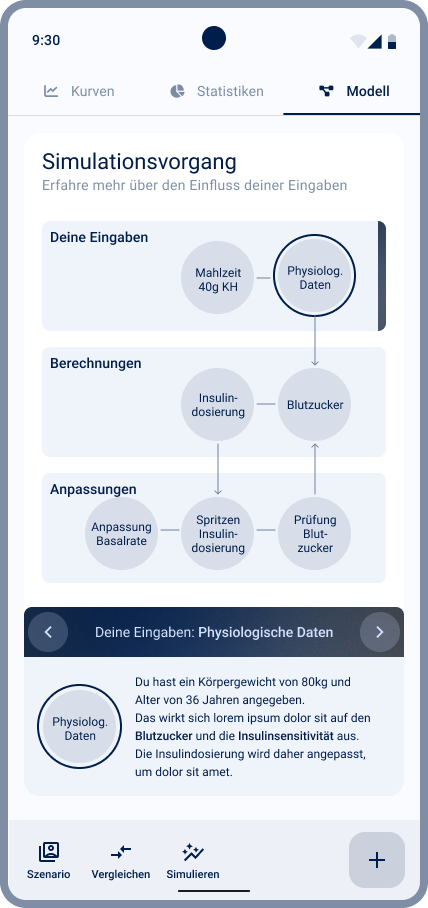
Conclusion
As part of this project, the LoopInsight1 AID simulator was considered and a revision of the user interface was carried out.
In order to find out to what extent the simulator can be optimised for patients, we conducted interviews with those affected and derived goals for the design.
Unfortunately, due to a lack of capacity, the design approach could not be finally evaluated with potential users.
Learnings
Learning #1
Involve users. Do it.
I gained so much insight from talking to people - not just about requirements, but also about the emotional impact of the system on users. Involve users wherever possible.
Learning #2
Do your research.
With this topic in particular, I had to realise that the market is very difficult to analyse, whether because of a lack of products or because of proprietary content. This makes it all the more important to consult research literature, for example, to build a solid foundation.